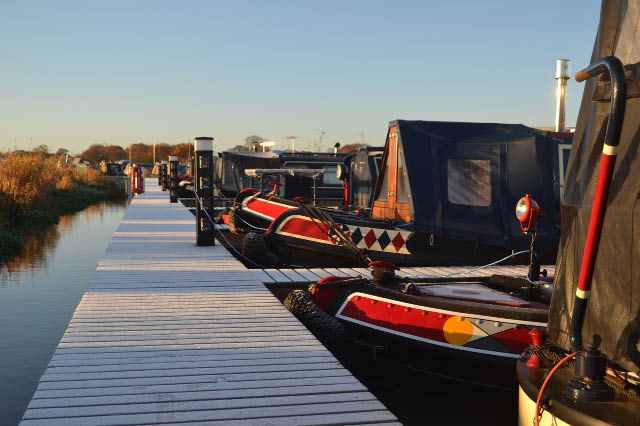Is Your Canal Boat Ready for the Winter?
The temperatures are starting to drop and summer cruising is well and truly over. For those of you with boats on Britain’s canals and rivers it’s time to think about winterising your boat. If you’re going to leave your boat unattended for any length of time you'll need to protect it from the damaging effects of winter. We’ve put together some tips to help you prepare your boat for the colder months ahead.

Inside the boat
You should consider taking off any soft furnishings to store them in a warm and dry environment, as the last thing you want when you return to your boat in the Spring season are smelly and mouldy furnishings.
Even if you have a secure mooring it's a good idea to remove any valuables and electrical items.
Check that all the vents are open to allow air circulation.
Exterior of the boat
Give the exterior paintwork a good coating of wax. Get any sap off the paintwork and maybe do a light T cut of the paintwork before applying the wax. Any protection you can give to the paintwork is worth it, as a professional re-paint can be expensive. There are paint mixing companies who will mix you up small ammount of paint if you know the BS or RAL number of your paint colour. Most chandlers will sell good quality enamel paints suitable for marine applications and can advise on rust prevention treatments.
Treat boat covers with specialist vinyl cleaners to help to protect them. Put on the chimney cap & check the seal on chimney collars and any other inlets, check around the windows whilst you’ve got the sealant gun out and seal any cracks where water might ingress.
Make sure your boat's mooring pins and ropes are secure, but slack enough to deal with the normal rise or fall of water levels. Check your mooring ropes for wear and tear and replace if required. Where possible, attach a long rope to a tree or higher ground, so that if flooding occurs, or the boat becomes loose in high winds, the additional rope could provide an extra safety line.
Visit the boat regularly, especially during extreme weather or prolonged rainfall to adjust mooring ropes and check bilge pumps, and check that batteries are coping with the situation and that deck drains are clear and free debris and leaves.
Engine and Bilges
Moored boats can rock from side to side and take on water because of high winds or the wake of passing boats. Fitting an automatic bilge pump float switch will give you peace of mind that any water will be removed from the bilges. Always test the bilge pump and battery charge levels before leaving the boat and when you return, or before going on a long journey. Heavy rainfall, leaking stern glands and issues with weed hatches can result in water ingress that quickly fills the boat and causes it to sink. If batteries go flat at a critical point it can be devastating.
Grease the stern tube before leaving the boat to prevent water ingress. Although most stern glands leak once the propeller turns, the grease acts like a seal while not in use.
Run the engine for an hour every time you visit, as this pushes oil around the engine and prevents it rusting. It will also top up the battery if left running long enough (beware of doing this if you’ve drained the cooling system!). Spray terminals with a silicone-free lubricant and grease all available grease points on the engine and drive and electrical connectors.
The best protection for the engine is to change the oil and service the engine according to the manufacturer's instructions before leaving for long periods. This way all the filters are clean, water has been removed and any corrosive elements that may have built up inside the engine are washed away. Give the engine and electrical components and wiring a good spray with WD-40, this will help to keep the damp away and prevent bad connections in the spring.
Diesel Tank
Condensation can form on the inside of a partially empty fuel tank which can promote the growth of diesel bug and cause the engine to run poorly. So it's a good idea to top up the diesel tank so there is less chance of condensation forming.
Plumbing
Open all the taps and drain down the water system. Ensure that the shower is drained and shower head removed, with the valves left open.
Drain the calorifier and any pipework if possible. If not, try and insulate the water tank with a temporary insulating blanket
Batteries
Batteries should be fully charged and ideally left on a float charge from a purpose built marine battery charger. If this isn't possible, then check their charge every month and top up as required. Make sure the electrolyte level is correct and battery terminals are free from corrosion.
Insurance
It's worth checking your insurance policy to make sure that you are covered for frost damage, as this isn’t always standard on all policies. If you are covered, insurance policies normally insist the boat is winterised in accordance with manufacturer’s recommendations.
Make sure your have decent locks on the doors, and make sure that all windows are closed.
Read more of our tips for winterising your narrowboat
How to live on your narrowboat during the winter